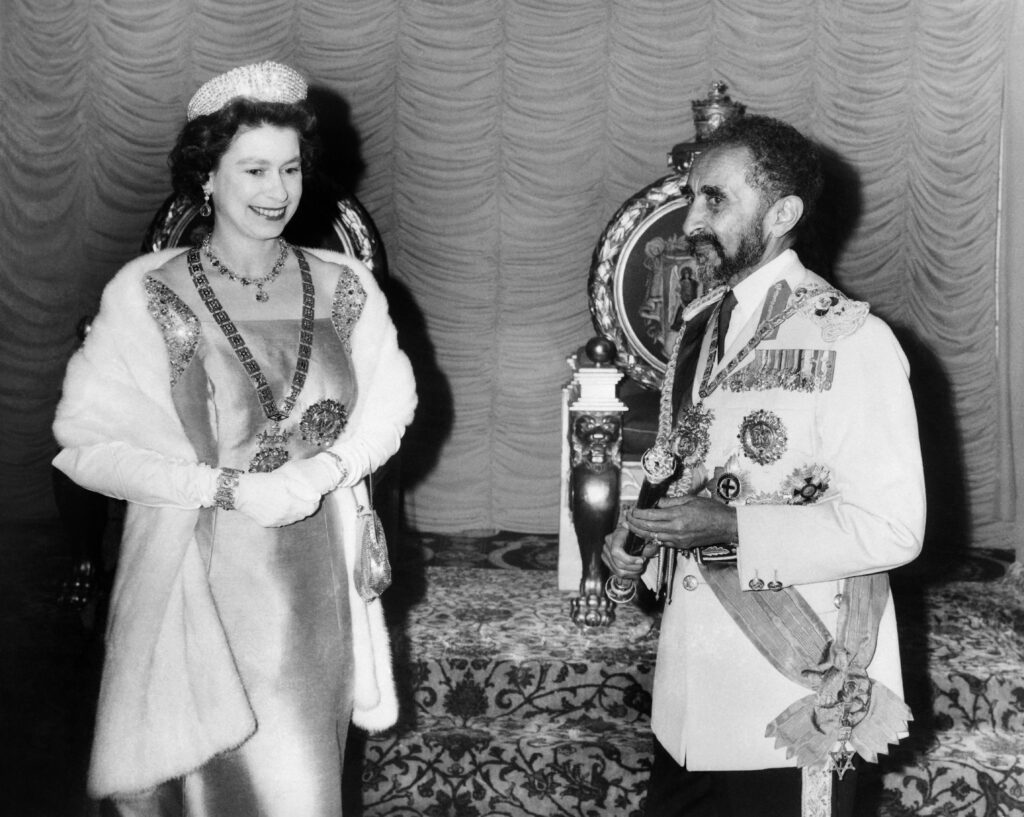The legacy of Ethiopia’s last emperor Haile Selassie remains contested in his increasingly polarised country half a century after his death: praised as a moderniser by some, others condemn him as an autocrat who ignored a famine.In one of the last known photos of the king — known as the “negus” in Ethiopia’s Amharic language — the frail and bedraggled emperor is removed by soldiers from his Addis Ababa palace on September 12, 1974, the day the military seized control of the country.It marked the end of a reign that lasted 44 years, five months and nine days, and a dynasty that spanned nearly three millennia.Less than a year later, during the night of August 26, 1975, the 83-year-old was killed by the Marxist military regime of the Provisional Military Administration (Derg), suffocated under a feather pillow.Fifty years on, there is no official ceremony planned to commemorate the emperor, his life, or his death.- Mixed legacy -During his long reign, Tafari Makonnen, who took the name Haile Selassie I after his coronation in 1930, was known as a “moderniser”.”He can be regarded as the founder of modern Ethiopia,” said Ian Campbell, a historian specialising in the east African country.”He launched major development programmes in agriculture and education, and, through his interest in international travel and foreign affairs, he truly put the country on the map,” he told AFP.But he said as a traditionalist Selassie’s rule was unsurprisingly autocratic.His descendent, 68-year-old Beedemariam Mekonnen, who was imprisoned for 12 years under the Derg, told AFP his grandfather’s chief contribution was education– pointing to his founding of Addis Ababa University, the oldest in Ethiopia.Like Campbell, he also believed that Selassie helped to modernise the country — “before him, there was no constitution, no police”.But Selassie’s legacy remains mixed, Campbell said, adding: “it depends on who you ask”.Much of that difference of opinion comes down to Ethiopia’s increased ethnic polarisation, he said.”The response may also be influenced by the ethnicity of the respondent, and the extent to which he or she views the emperor’s rule as having been Amhara rule,” he said, referring to one of Ethiopia’s largest ethnic groups, who dominated during his reign.Today, Ethiopia is the second most populous nation on the continent, with around 130 million inhabitants and a mosaic of more than 80 ethnic groups.It is riven by divisions.A civil war raged between 2020 and 2022 in the northern Tigray region, leaving hundreds of thousands dead, and clashes still roil the most populated regions, Amhara and Oromia.The country has been ruled since 2018 by Prime Minister Abiy Ahmed, originally from Oromia.- ‘Mismanagement’ -In the grounds of the immense Holy Trinity Cathedral in capital Addis Ababa, portraits of the negus are everywhere.Selassie’s bones have rested here since 2000, when the “Old Lion of Abyssinia” was given a public but unofficial funeral.His final resting place came after being extracted from one of the Derg’s mass graves in 1992, where he was thrown after being executed.”I admire him,” said Fitsum, an informal cathedral guide, who declined to give his last name.Fitsum said he appreciates Selassie’s “important engagement in the pan-Africanist movement” in a country where the African Union is now headquartered.The emperor also remains popular with Rastafarians, a spiritual movement born in the 1930s among the descendants of Jamaican slaves.They consider Selassie a Black Messiah, thanks to claims his ancestry traces back to the biblical King Solomon and the Queen of Sheba.But for his grandson, Beedemariam, “the problem is that he stayed in power too long, so ended up making mistakes”.Including over the disastrous 1973-1974 drought, which is estimated to have killed between 100,000 and 200,000 people — depending on the source — which led to a famine in the northern Wollo region.”He went there, but he was shown places where there was no famine. And this mistake cost him dearly, and there was mismanagement,” Beedemariam said.”As in all dictatorships, people don’t dare tell the leader things.”
